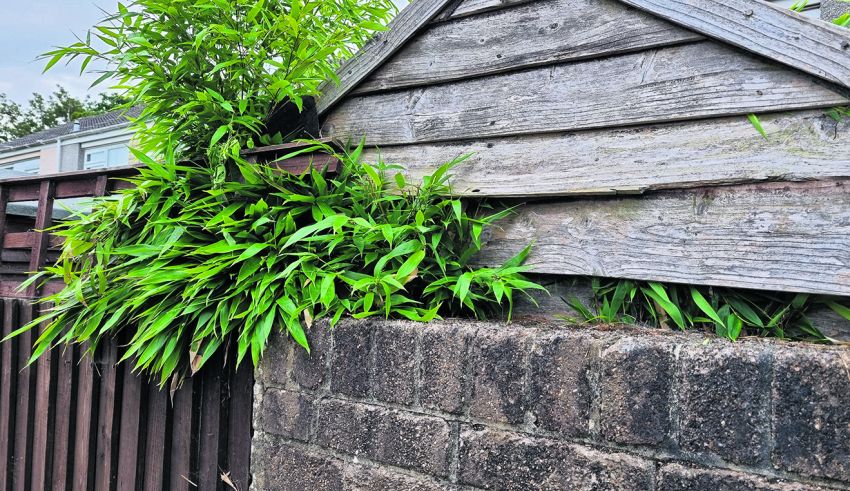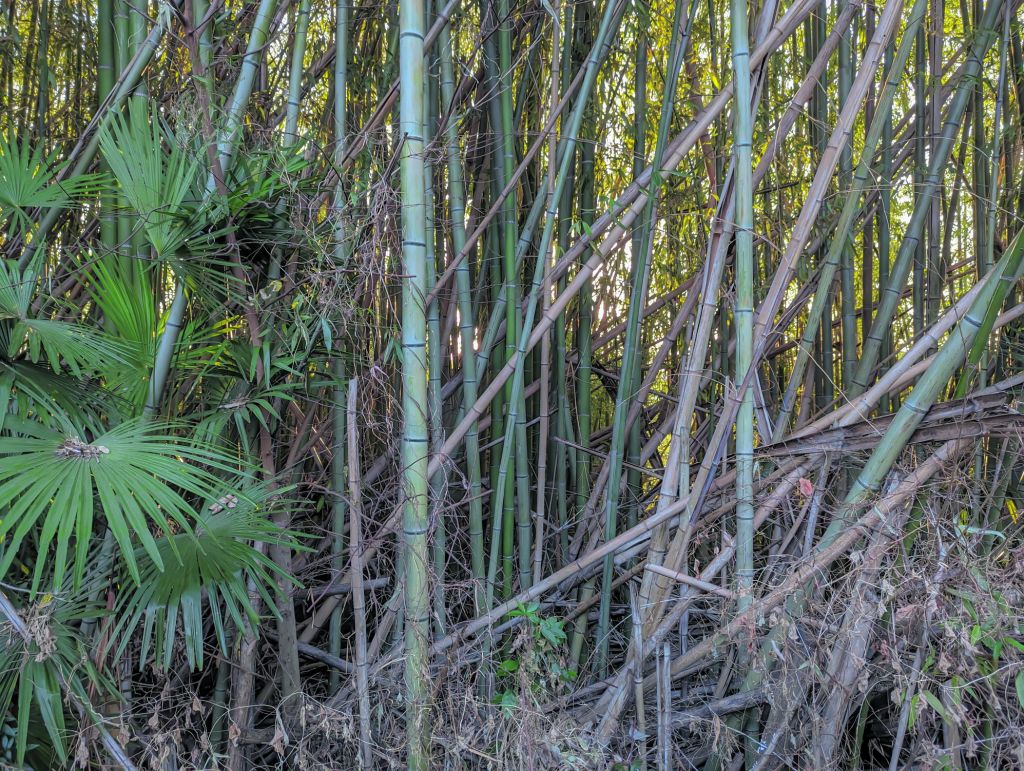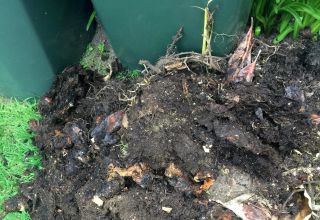
Bamboo is an incredible plant. Fast growing, the largest member of the grass family, tough as steel, and it can be beautiful. However, if you put the wrong kind of bamboo into your garden it can be a recipe for disaster.
Bamboos have never had a good press. In recent years their reputation has gone from bad to worse and is now seen as an almost evil plant which, given favourable growing conditions, will spread quickly, with strong, fast-growing stems shooting up some distance from the parent plant.
Bamboo is in fact, a woody plant in the grass family Poaceae, with tall, upright canes and long narrow leaves. Most bamboos have evergreen foliage with canes that come in shades including green, brown, yellow and black.
The bad press for the bamboo plant is not totally fair. It can be a popular screening , fast growing , dense and offering security. The problem is controlling it!
How bamboo causes problems
According to Kew Gardens, some species can grow one metre in 24 hours. Although most species of bamboo will not grow that quickly, certain bamboo varieties can become a problem if they’re not contained.
There are two types of bamboo: clump forming and running. As you can guess, clump forming pretty much stays put, whereas running bamboo will run. It’s important to understand how to stop bamboo spreading, because left unchecked, running bamboo will spread all over your garden and your neighbour’s garden. Running bamboo spreads by rhizomes under the ground. New shoots can emerge several metres away from the main plant. This type of bamboo can cause damage to paving, growing up between the cracks, and spread into neighbouring properties. Clumping varieties tend to be less vigorous but can develop into large clumps if not managed.
It’s a common misconception that all parts of the bamboo underground are invasive and can regrow. However, only the rhizomes are capable of regeneration, while the fibrous roots that extend off them cannot regrow on their own. Therefore, removing bamboo is made much easier when you know that you only need to get rid of the typically tough and ribbed rhizome, leaving the fibrous bamboo roots that don’t regrow behind.
Bamboo and the law
There’s no law restricting the growth of bamboo in gardens, but you may be held liable if bamboo in your garden invades a neighbouring property.
Bamboos
Choose a clumping type of bamboo as these are easier to control than running types. You should see the description ‘clumping’ on the plant label or in the description online. Clumping types have short rhizomes which form more of a root ball, whereas running types have long rhizomes which spread further from the main plant.
When planting bamboo put in root barriers to contain it. You can buy purpose-made root barriers.
Plant bamboo in containers – for a large display of bamboo, try planting in long troughs and make sure pots are as deep as possible, at least 45cm.
For established bamboos that are outgrowing their spot, you can control them by digging a trench around the bamboo. It should be about 30cm deep and at least 30cm from the bamboo. Cut through any rhizomes in the trench and dig out any that have grown beyond the trench.

Q&A on bamboo control
How to kill bamboo
The best way to get rid of bamboo is to dig it out. Make sure that you remove all the pieces of rhizome as bamboo can grow back from a tiny bit of root. First of all cut the canes down as these can be saved and dried for use in the garden. Then dig out the clump, removing all the roots.
Can boiling water kill bamboo?
Boiling water can help kill bamboo shoots and roots that are near the surface, but using this method may not eradicate the whole plant. The water might not penetrate deep enough to kill all the roots. It will need repeated attempts on any new shoots that emerge. A more effective method is to dig out the plant or use boiling water to weaken the plant before digging it out.
How do I stop neighbours bamboo from growing in my garden?
You can insert a physical barrier into a trench to form a blockade. Purpose made bamboo root barriers are easiest to handle and insert. Edges should overlap by at least 30cm (1ft) and be bonded. The barrier should extend above the soil level by at least 7.5cm (3in) to prevent rhizomes growing over it.
Can dead bamboo come back?
There have been a lot of instances when what looks to have been a dead plant starts to recover So in fact, there is always the threat that new shoots and stalks will grow back.
What happens if you cut the top off bamboo?
Once topped, bamboo will never grow vertically again. Bamboo doesn’t experience secondary woody growth like a tree. Once the bamboo is topped, it will remain the same height for all the cane’s life cycle.
Does bamboo have a lifespan?
Without any protective treatment, most bamboo species have an average natural durability of less than three years. Stored under cover, untreated bamboo may last up to ten years.
Is bamboo stronger than wood?
Yes, bamboo is generally stronger than wood, especially in terms of tensile strength. While it’s technically a grass, bamboo has a higher tensile strength than many common hardwoods like oak and pine. This means it can resist stretching and bending forces more.
“It’s a common misconception that all parts of the bamboo underground are invasive and can regrow”











